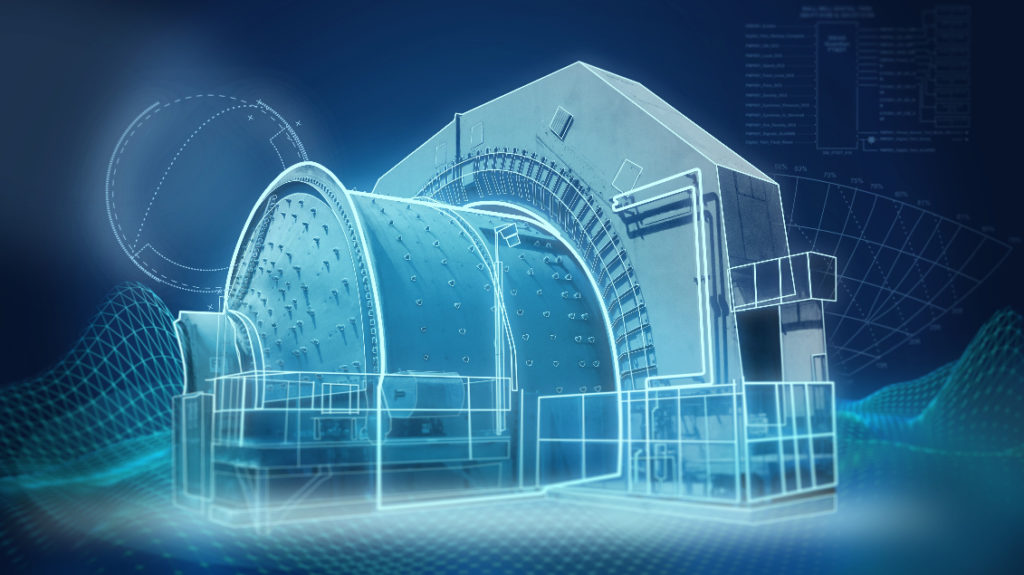News
Reducing CO2 Emissions and Enhancing Efficiency in Mining: The ANDRITZ Metris ACE Optimization Technologies – “Minera Los Pelambres” AMSA Case Study
Provided By ANDRITZ

In the ever-evolving landscape of global mining, the impacts on production and the environment are of paramount concern. This article explores the transformative effects of Metris ACE optimization technologies on the comminution process, emphasizing their implications for both production output and the reduction of CO2 emissions. We will also delve into a compelling case study, MLP AMSA, to illustrate the practical benefits of these technologies.
Why Measuring the Carbon Footprint is Crucial
In a world grappling with the spectre of global warming, it is imperative to address the primary culprit: carbon dioxide (CO2) emissions. Controlling these emissions is the first and crucial step toward mitigating the devastating effects of climate change. Given their energy-intensive nature, mining operations play a significant role in contributing to CO2 emissions. Hence, measuring the carbon footprint is essential to effect change.
Estimation of Carbon Footprint in Mining: Base Approximation
A standardised approach is crucial to quantify the carbon footprint of mining operations. The World Resources Institute (WRI) and the World Business Council for Sustainable Development (WBCSD) have developed an international tool for calculating and communicating emissions inventories. This tool considers emissions generated due to energy acquisition, encompassing electricity, steam, heat, and cooling. a base approximation of the carbon footprint can be estimated. Assuming the use of large bulldozers, excavators, and trucks, with diesel fuel powering the mining equipment and grid electricity for processing, we find that the operation emits approximately 166.32 metric tons of CO2 per year from diesel consumption and 1,500 metric tons of CO2 per year from electricity consumption. Additional emissions of around 50 metric tons per year result from the transportation of mined coal. This simplified estimate, totalling 1,716.32 metric tons of CO2 emissions annually, provides a basic insight into the carbon footprint of such an operation.
Comminution Process and its impact
The comminution process in mineral processing, encompassing activities like grinding and crushing, plays a crucial role in liberating valuable minerals from ore but presents environmental challenges due to its substantial energy requirements, primarily met by fossil fuels, resulting in significant carbon dioxide (CO2) emissions. As mining operations aim for greater efficiency and mineral recovery rates, there is a growing need to address the escalating energy consumption and emissions associated with this process. To mitigate its environmental impact, the industry is increasingly focusing on adopting energy-efficient technologies, utilizing renewable energy sources, optimizing grinding circuits, and exploring ore sorting and pre-concentration techniques, all aimed at reducing the carbon footprint of comminution operations and promoting more sustainable mineral processing practices.
Understanding Optimization Technologies that can help.
Optimization technologies represent a set of integrated tools, including advanced process control, digital twins, Industrial Internet of Things (IIoT), and analytical data. They offer a platform for greater autonomy, intelligence, collaboration, and operational efficiency in mining processes. These technologies, championed by the International Society of Automation (ISA), are pivotal in addressing the carbon footprint while improving overall performance.
Innovative Strategies for Maximizing Grinding Performance while reducing emissions.
Developing innovative strategies to maximize grinding performance while simultaneously reducing emissions in mining operations presents a multifaceted challenge. One major hurdle is achieving optimization without relying solely on camera-based feed monitoring. Deciding when to prioritize coarse material over fine material involves intricate considerations, necessitating a comprehensive approach. The integration of diverse optimization technologies is pivotal, expanding the control horizon and enhancing production efficiency while addressing environmental concerns. Key elements encompass grindability optimization, fine-tuning particle size control, and real-time stockpile monitoring. By tailoring grinding parameters, controlling particle size distribution, and optimizing material blending, mining operations can not only improve their operational efficiency but also contribute to emissions reduction, aligning with sustainable and responsible mining practices.
MLP AMSA Case Study – ACE Technologies Making a Difference
The Minera Los Pelambres AMSA (Los Pelambres, Chile) case study stands as a compelling testament to the remarkable efficacy of Metris ACE optimization technologies, underscoring their potential to revolutionize the mining industry. The Challenge encountered at MLP AMSA was formidable: the imperative of stabilizing and optimizing the SAG Mill circuit, a linchpin in the ore processing chain whose inefficiencies or disruptions could yield extensive repercussions. Metris ACE Technologies stepped in with an integrated approach to surmount these challenges.
At its core, the Metris SAG Mill ACE™ solution, with its fusion of real-time data analysis, advanced process control algorithms, and digital twin modelling, delivered an all-encompassing perspective on the SAG Mill’s performance. The primary aim was to bolster the throughput of the SAG Mill circuit, a feat achieved through meticulous operational parameter adjustments, informed by real-time data and predictive modelling. This achievement not only bolstered production rates but also optimized resource allocation. In tandem, the endeavour sought to curtail the specific energy consumption, a paramount concern due to the energy-intensive nature of grinding processes. Metris ACE triumphed in significantly reducing specific energy consumption, thus translating into tangible cost savings and a diminished carbon footprint.
The ramifications of this undertaking are truly noteworthy. A substantial reduction in CO2 emissions, made possible through Metris ACE technologies, holds profound economic and environmental implications, as energy consumption accounts for over 50% of mining operation expenses. Moreover, Metris ACE technologies have strategically targeted energy reduction in grinding areas, responsible for over 80% of total energy costs in mining operations, thereby yielding considerable reductions in carbon dioxide emissions. In a remarkable display of their efficacy, Metris ACE’s solutions, as exemplified in the MLP AMSA case study, realized a 3.3% increase in throughput and an impressive 4.84% reduction in specific energy consumption. This translated into a noteworthy carbon dioxide emissions reduction of 0.26 tons per hour, a magnitude equivalent to removing 134 mining trucks from active circulation.
The Metris ACE optimization technologies emerge as a beacon of promise within the mining sector, offering a dual benefit of heightened production efficiency and a tangible reduction in CO2 emissions. During the evolving mining landscape, the adoption of these innovative solutions assumes an indispensable role in fostering a sustainable and environmentally responsible approach to mineral processing. As we collectively chart a course towards global sustainability, the mining industry’s pivotal role cannot be overstated, and Metris ACE technologies remain at the forefront of this transformative journey.
Contact us today and get more information how ANDRITZ Automation & Digitalization can help your mining operation.
RELATED NEWS
- O+ Tower Project Showcases Our Production Prowess 2025-02-20
- Guangdong Aluminum Association and Moscow University Business School visited Gua 2024-12-12
- Guangdong Aluminium Association International Trade Co., Ltd. signed an overseas 2024-11-21
- Guangdong Aluminum Association International Trade Co., Ltd. Participates in the 2024-11-15
- Simplified Approach to Spandrel Area Treatment in Curtain Wall Glazing 2024-10-25
CATEGORIES
LATEST NEWS
CONTACT US
Contact: Manager:Miss Jasmien
Phone: +8618825429836
E-mail: info@gdaa-cn.com
Whatsapp:+8618825429836
Add: Headquarter:No.8,Yixian Road,GDAA Mansion,Guangfo Zhicheng, Dali Town,Foshan,Guangdong.China
